Inside — and outside — the 2019 Mac Pro in pictures
Apple's newest Mac Pro is here. AppleInsider shows you Apple's 2019 Mac Pro to see how well-designed the machine truly is.
Deboxing and outside the Mac Pro
Apple's new Mac Pro arrives in a massive box, copiously covered in warning stickers due to the overall weight. Even at this scale, Apple's unboxing experience is wonderful. Velcro straps hold together the paper packaging which lifts free, revealing the tower inside.
The largest Apple logo we've seen on a product is stamped on either side of the aluminum housing, sitting between the two polished stainless steel handles that make up the frame.
Much has already been said about the unique lattice grille on the front of the machine. Behind the 3D mesh is a matte black grille, to prevent objects or large debris from getting into the interior.
Mac Pro power and upper case
On top of the body is a circular power button used to turn the machine on. It resides next to a pair of Thunderbolt 3 ports for charging or connecting anything from your iPhone to the black peripherals Apple includes in the box.
The expansive openings on the back of the enclosure are for PCIe expansion that will help future-proof your Mac Pro. On the bottom, is the user-replaceable power supply, and a pair of 10-gig Ethernet ports. The factory-installed video card sits above it — in this case, it is the Radeon Pro 580X with two HDMI ports.
On top of the back is Apple's default IO board, which has dual Thunderbolt 3 ports, a headphone jack, and two USB-A ports.
If you look at the top of the Mac Pro again, you may notice the plastic patterns that are under the handles. This is where Apple was able to hide Wi-Fi and Bluetooth antennae to work around the metal case that would block the signal.
How to open the Mac Pro
A handle flips upwards from the top and is rotated 90-degrees to open the case and access the Mac Pro internals. As the handle is rotated, the casing will move upwards just a bit before allowing you to pull it the remainder of the way off.
Right on the top of the machine, we find a series of pogo pins. These connect to the power button on the case. When that connection is broken, the power to the Mac Pro is cut off. That means you can't use the Mac Pro with the case removed.
Inside the Mac Pro
On the right side of the case, it is mostly bare. The only visible clue as to its inner secrets is a set of lock buttons.
When pressed, these eject the covers that protect the multitude of RAM slots.
There are twelve RAM slots in total, split into two bays of six, each with their own housing. In our base configuration, four slots are used for 32GB of RAM.
Apple can charge up to $25,000 for 1.5TB of RAM, though you can save significant money by doing the replacement yourself with aftermarket vendors.
Considering it took us only about 30 seconds to gain access to the RAM slots, we're sure this will be something many users will opt to do.
Between each of those RAM bays is the speaker module. You can see it sandwiched between in the above shots, and you can see the forward-facing output fro the front.
On the right side, if we remove the blower fan housing, we see the Mac Pro flash storage modules. Modules installed here are tied to the T2 chip and not user-replaceable — but there are still many other ways to add storage to the Mac Pro.
On the top left, we see the Mac Pro logo emblazoned on a massive heat sink that hides the processor.
Slightly below that and to the right, is an interior USB-A port. This is a standard USB-3.0 type-A port, intended primarily for authentication dongles. The case can then be locked shut with a Belkin lock, securing hardware authentication keys inside the computer.
The 2019 Mac Pro can utilize two MPX modules with up to four GPUs. In total, there are eight PCI-E slots. Of those, four are occupied when using two MPX modules, and one is a half-sized slot used by Apple's default IO board.
How to install a PCI-E card or MPX module in a Mac Pro
Apple individually numbered the steps to remove the MPX module or the PCIe cards. First, the cards are unlocked via a switch near the top adjacent to the internal USB-A and SATA ports. Then the two guards are removed on either side via a Philips screwdriver.
Finally, the lever is pulled on the MPX module to free it from the Mac Pro. Not only can the MPX module be removed, but the IO board and power supply can also be removed similarly from the same side.
In our time with the Mac Pro, we're very pleased with Apple's attention to detail. Everything is very modular and easy to repair, swap, or upgrade. We were able to remove the fans, speaker, and power supply with nothing but standard tools.
Everything on the inside is precisely laid out, and well-labeled for easy access, no manual required.
Stay tuned to AppleInsider for additional Mac Pro coverage in the coming days.
 Andrew O'Hara
Andrew O'Hara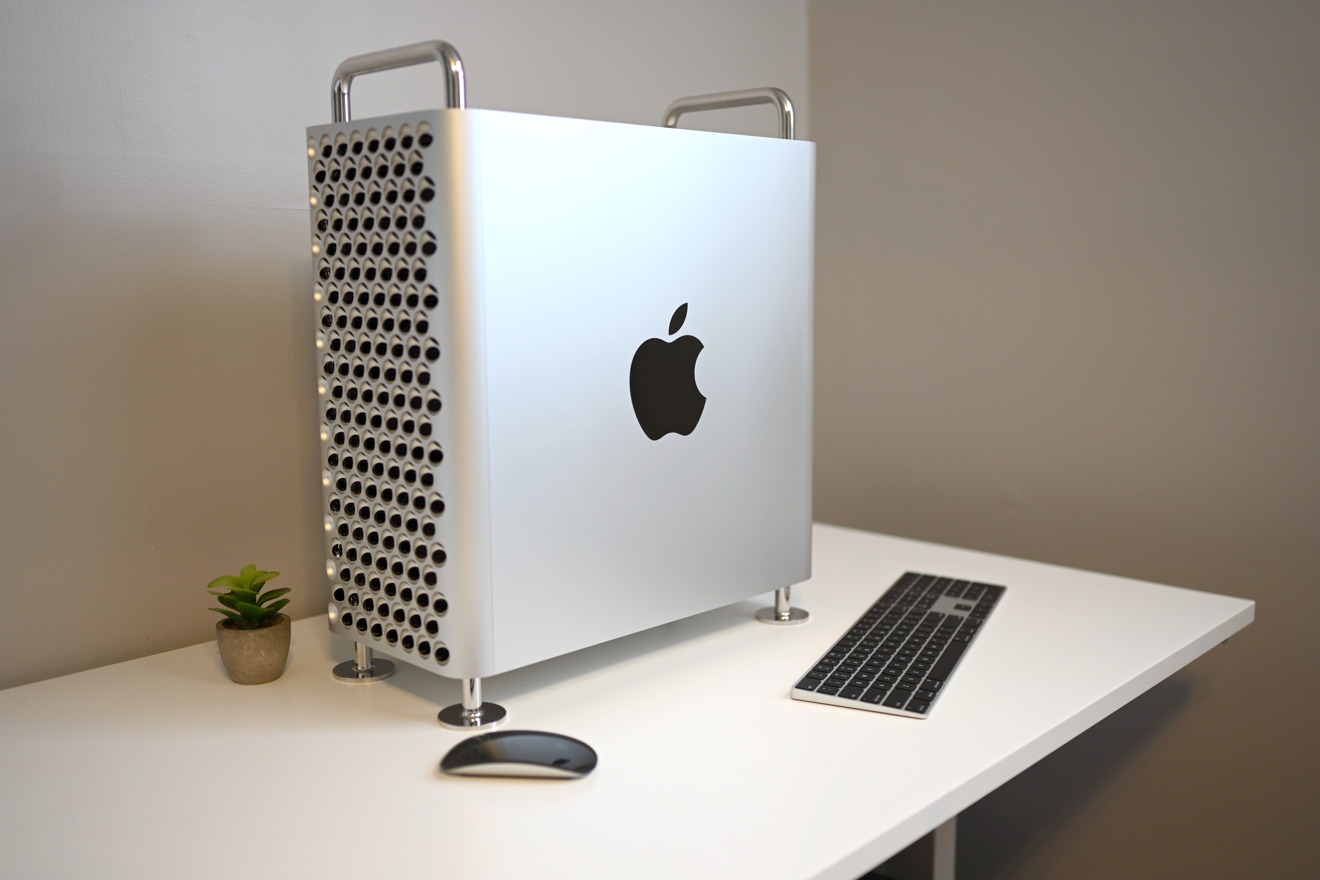
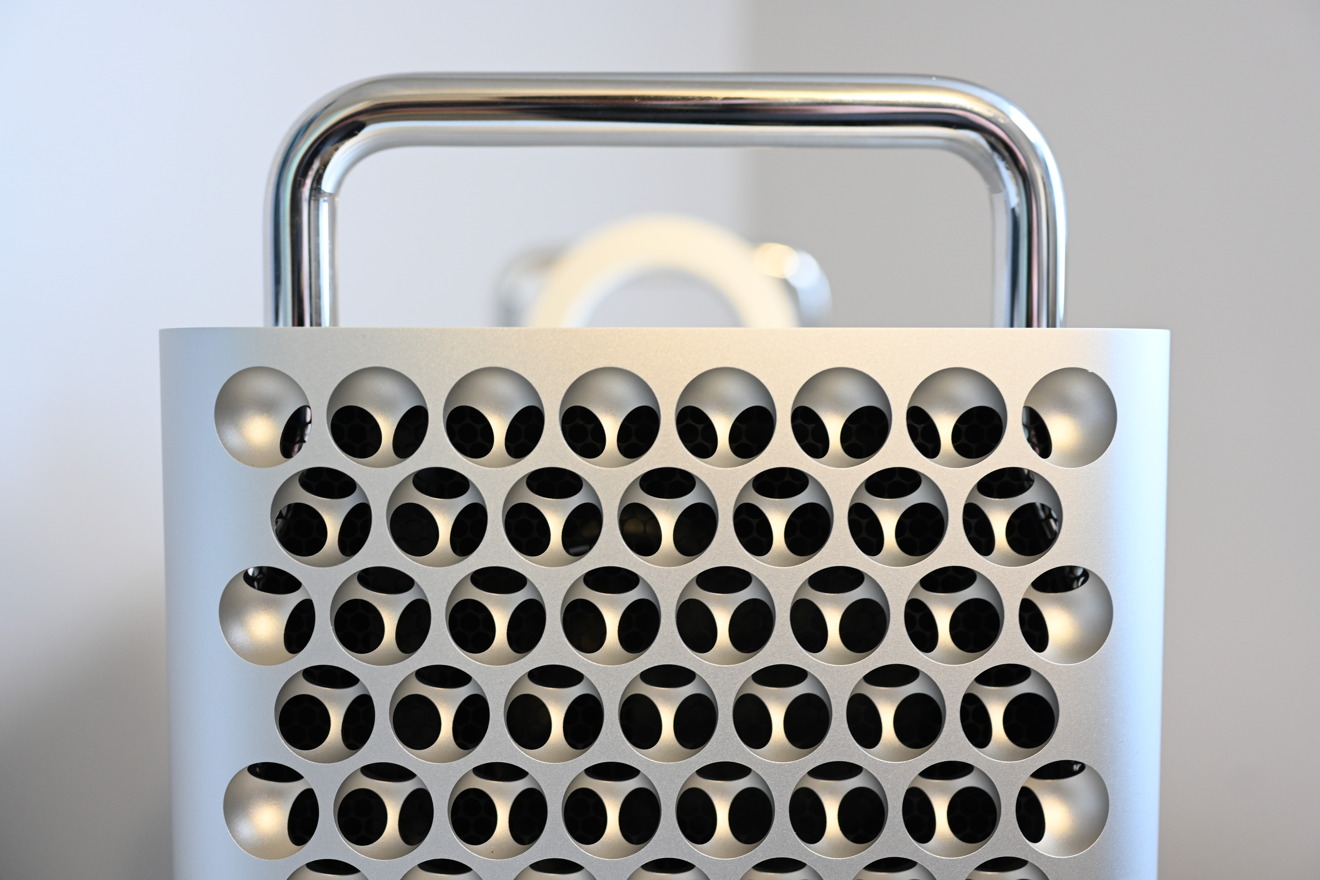
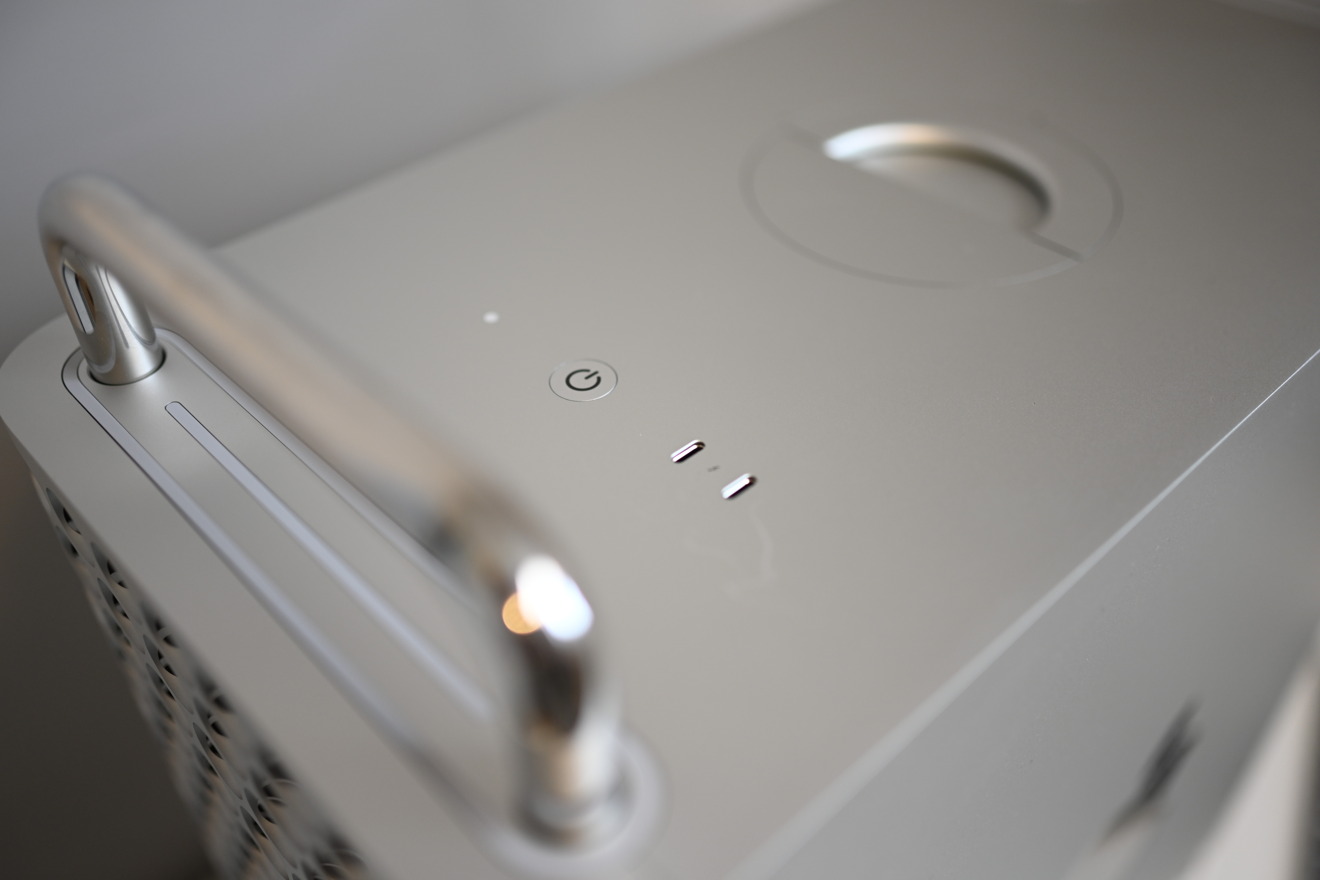
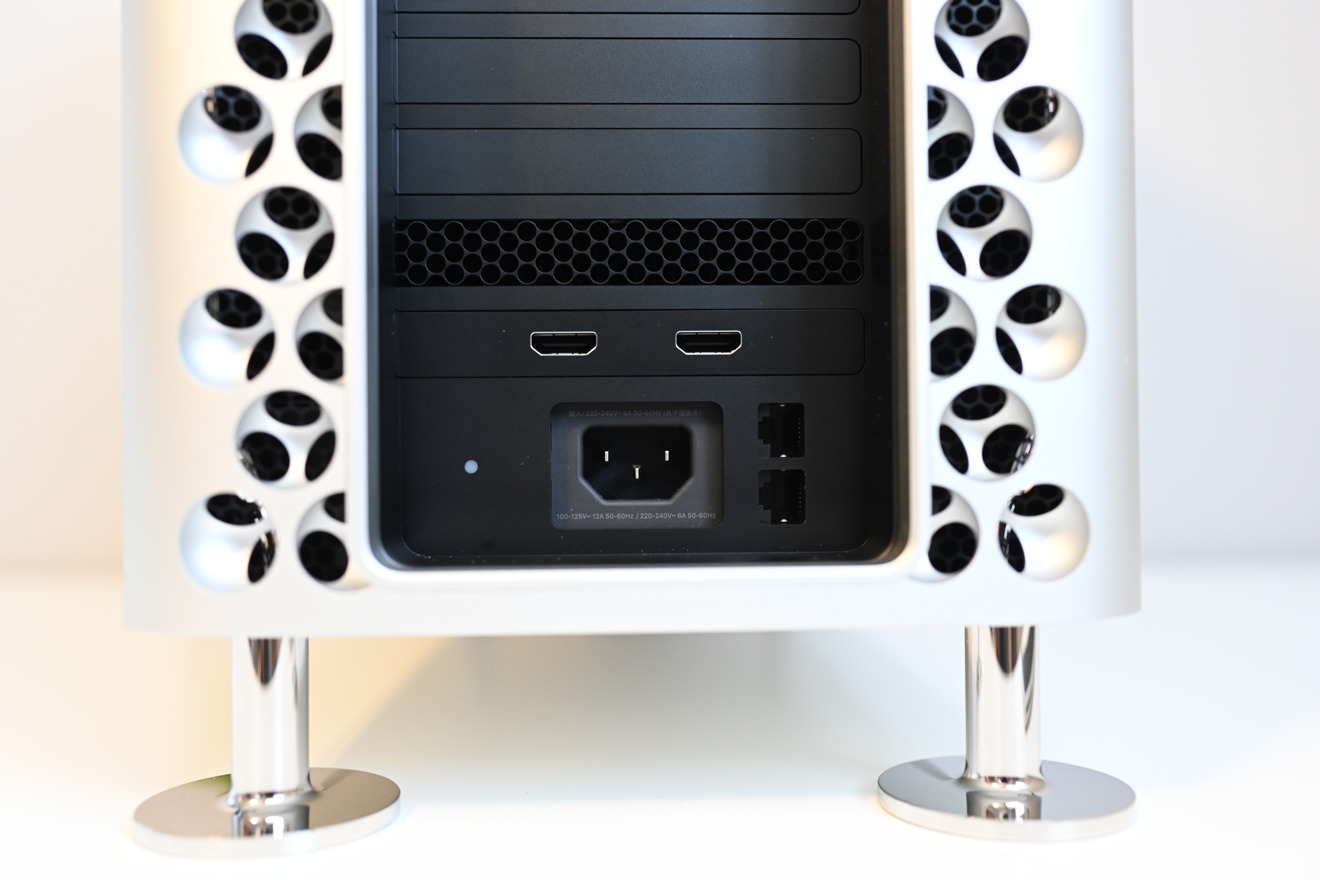
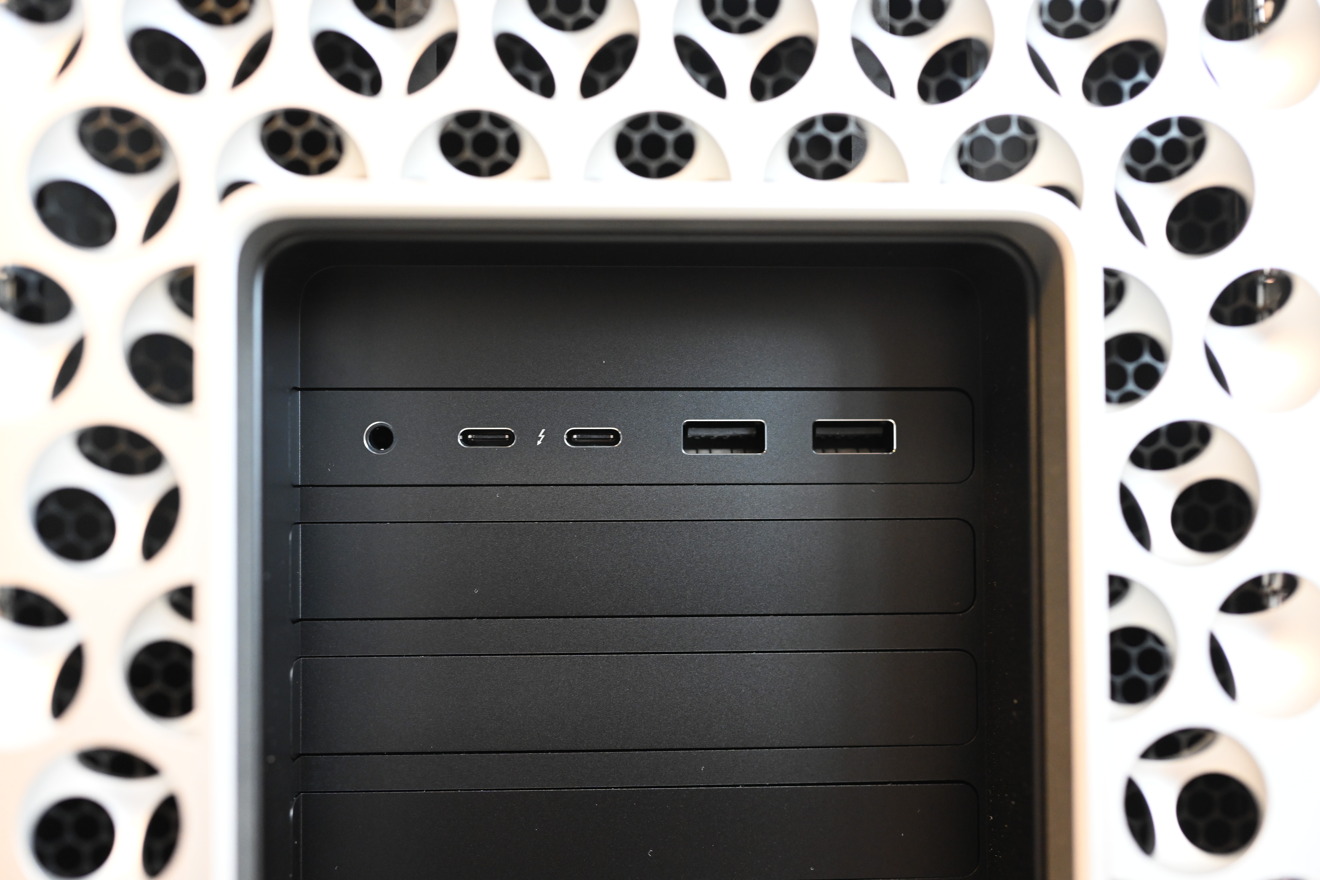
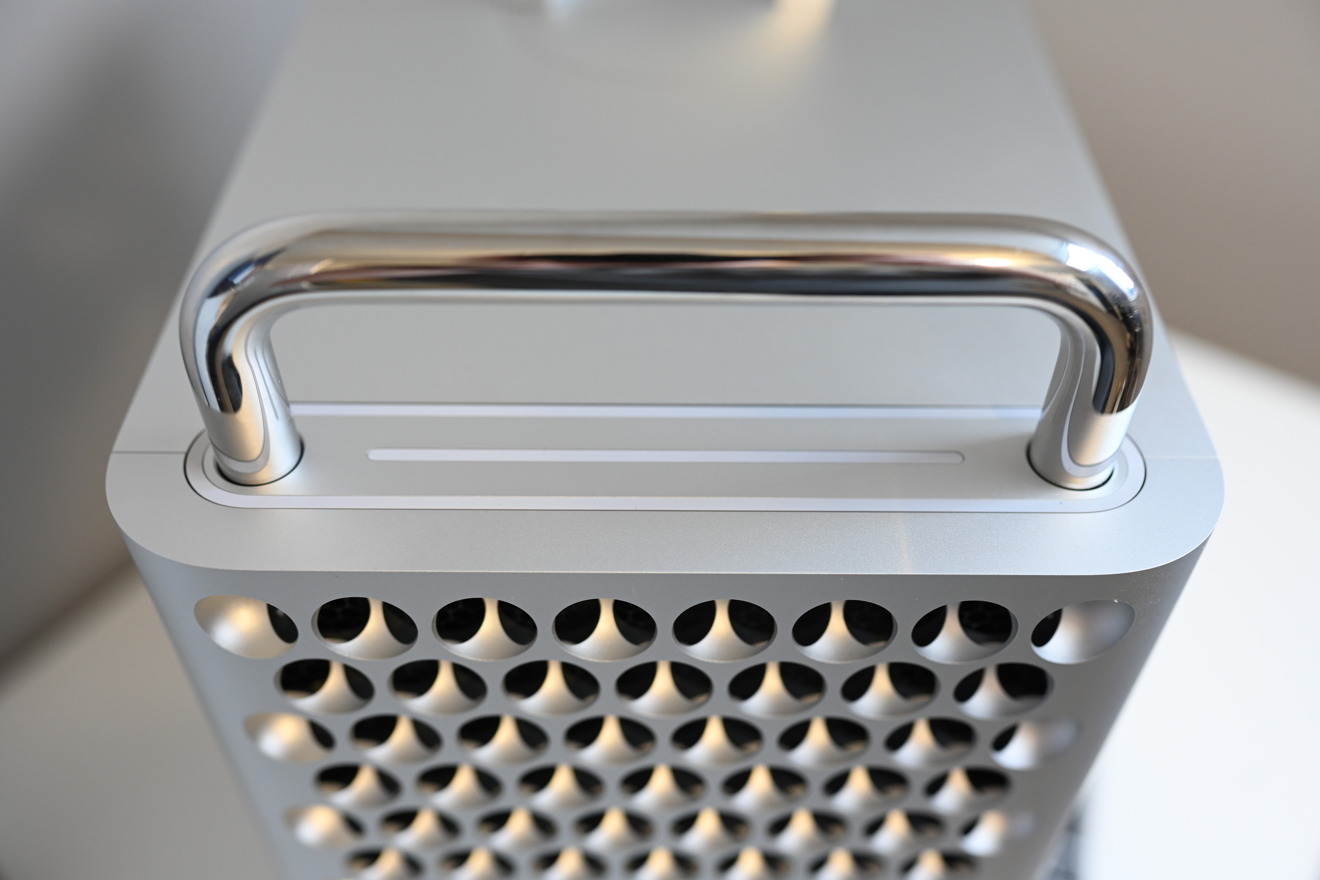

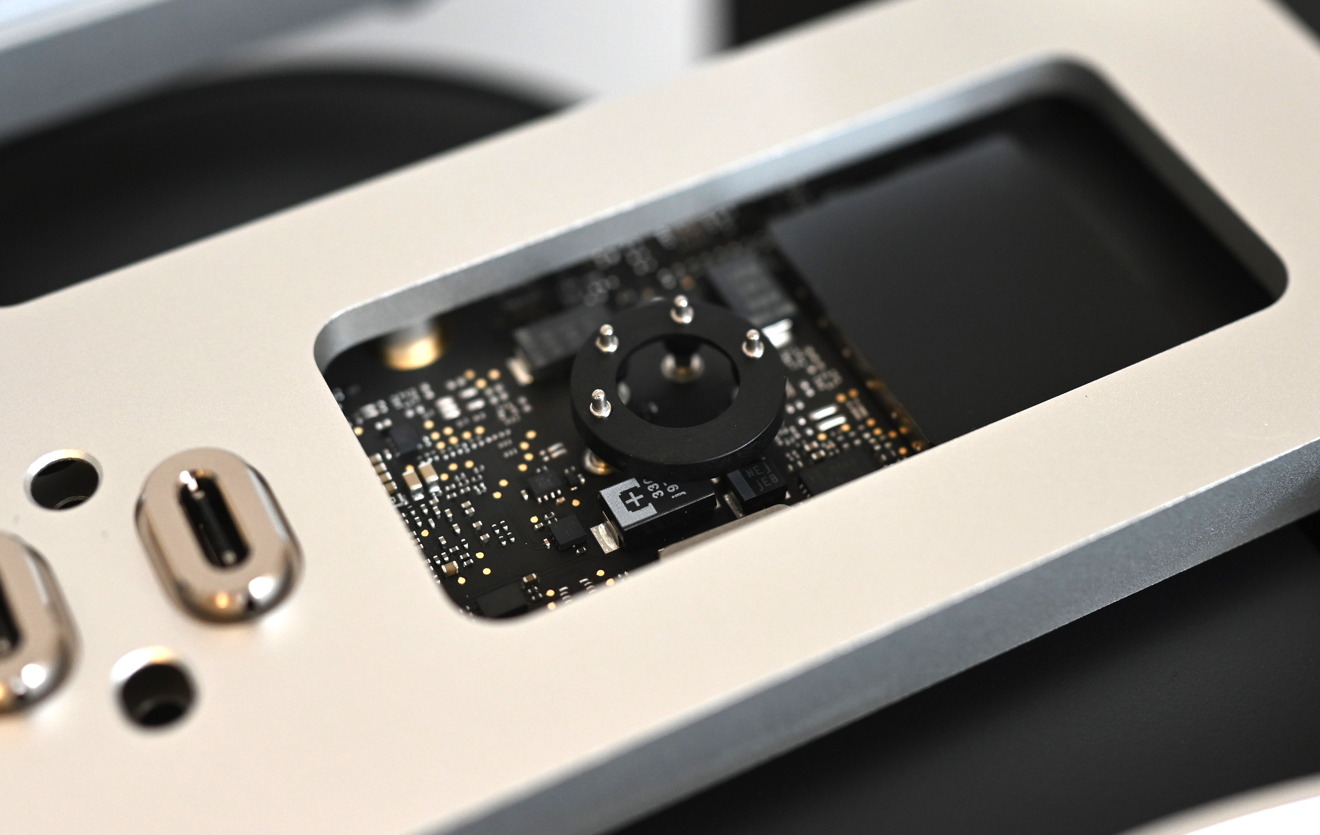
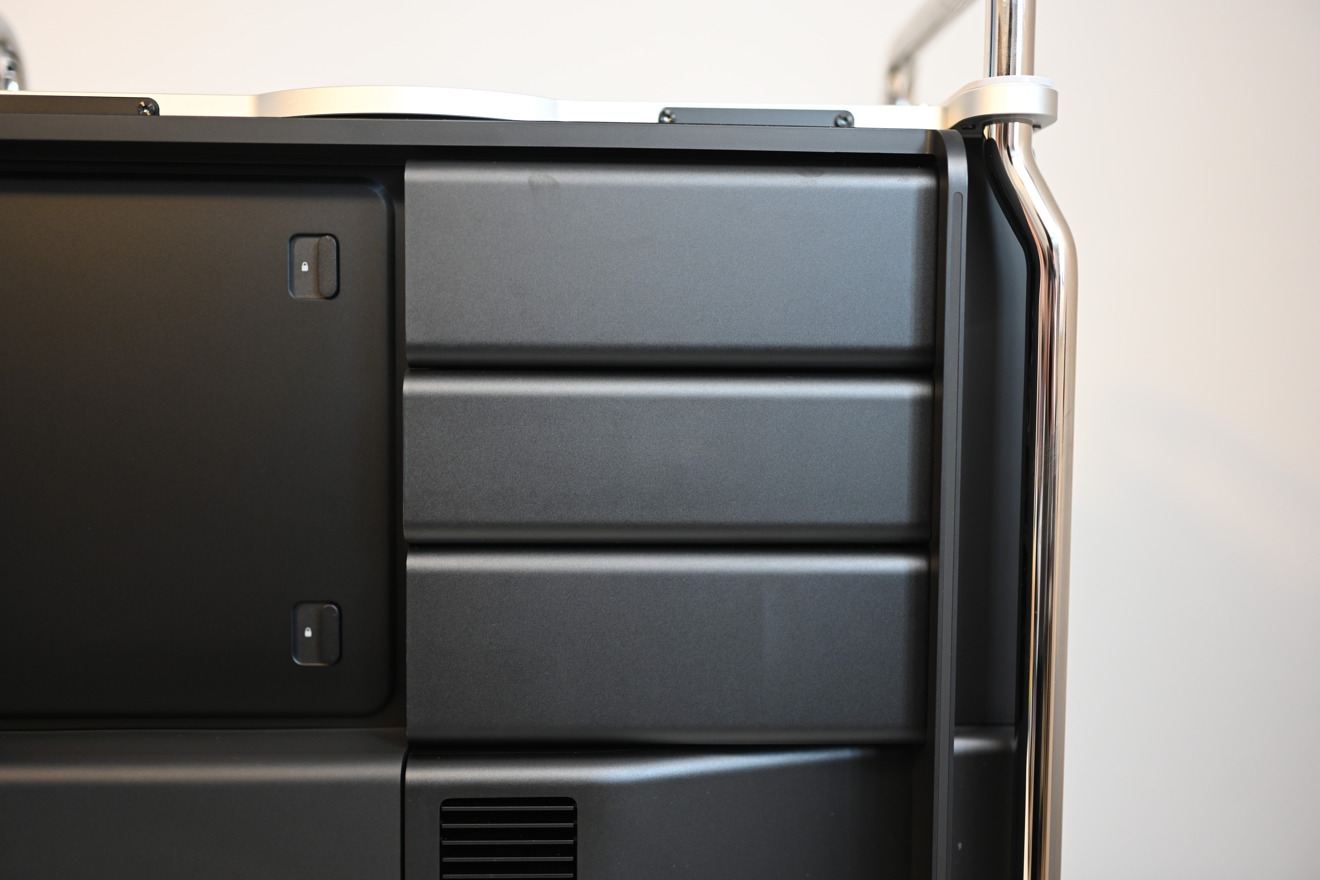
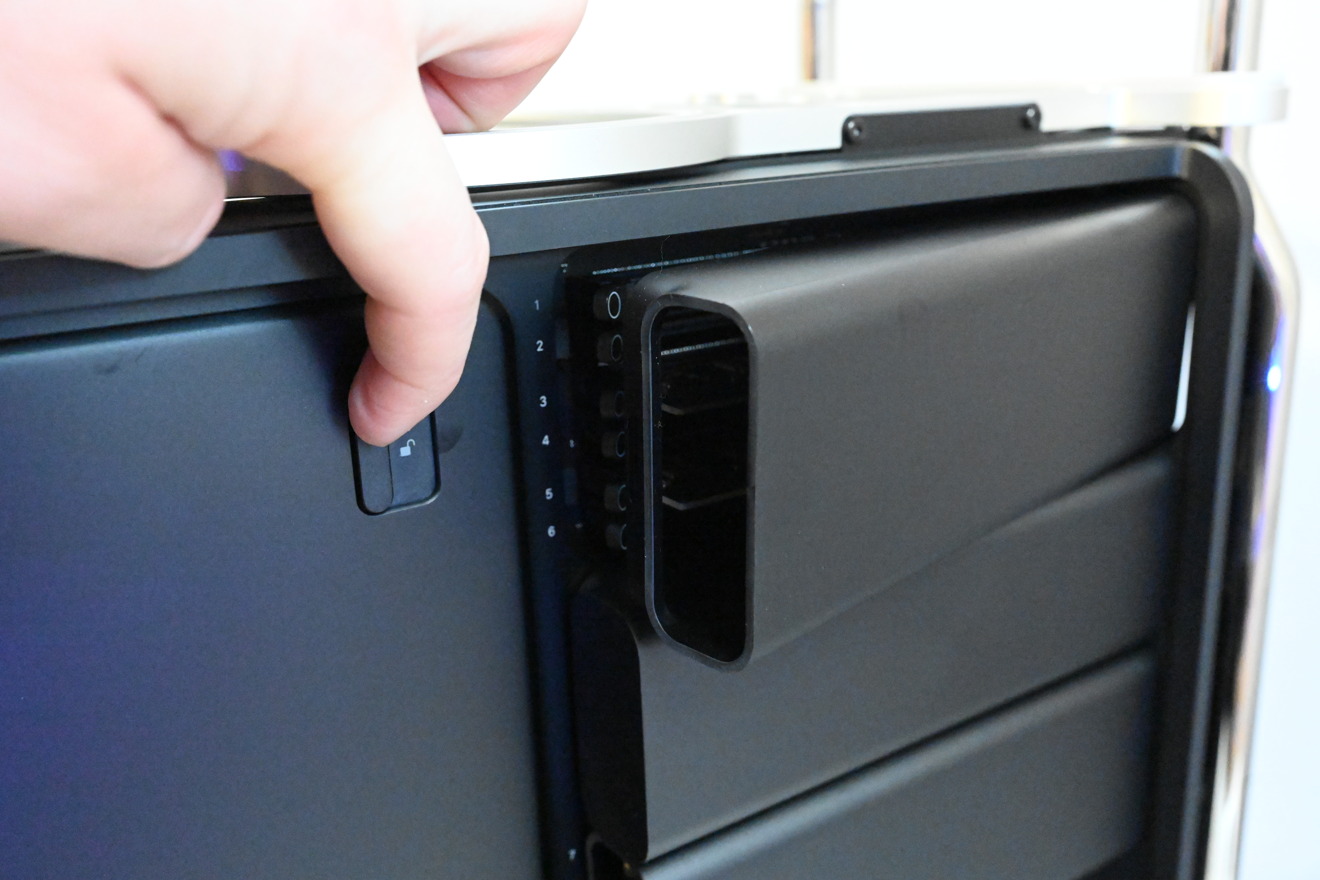
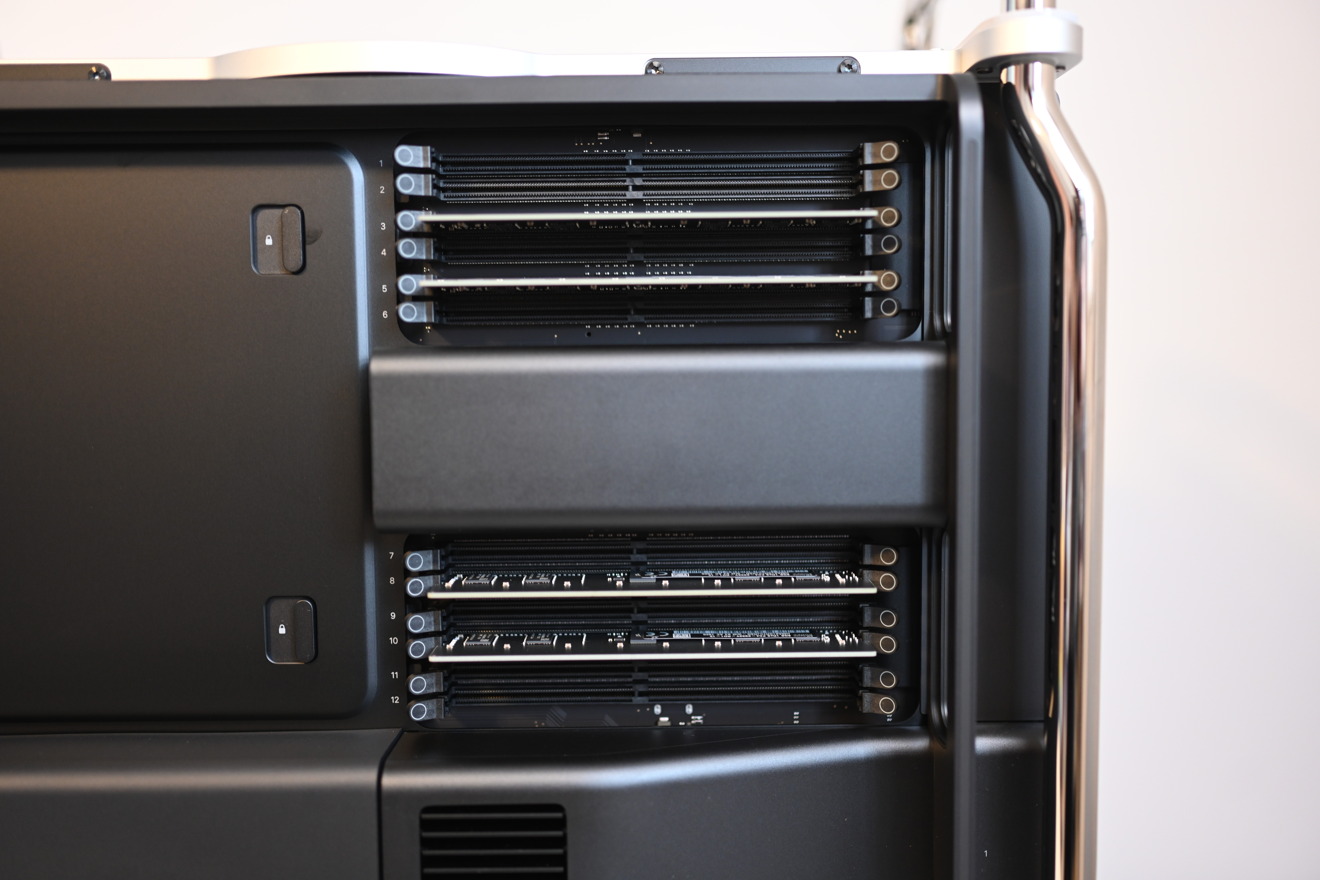
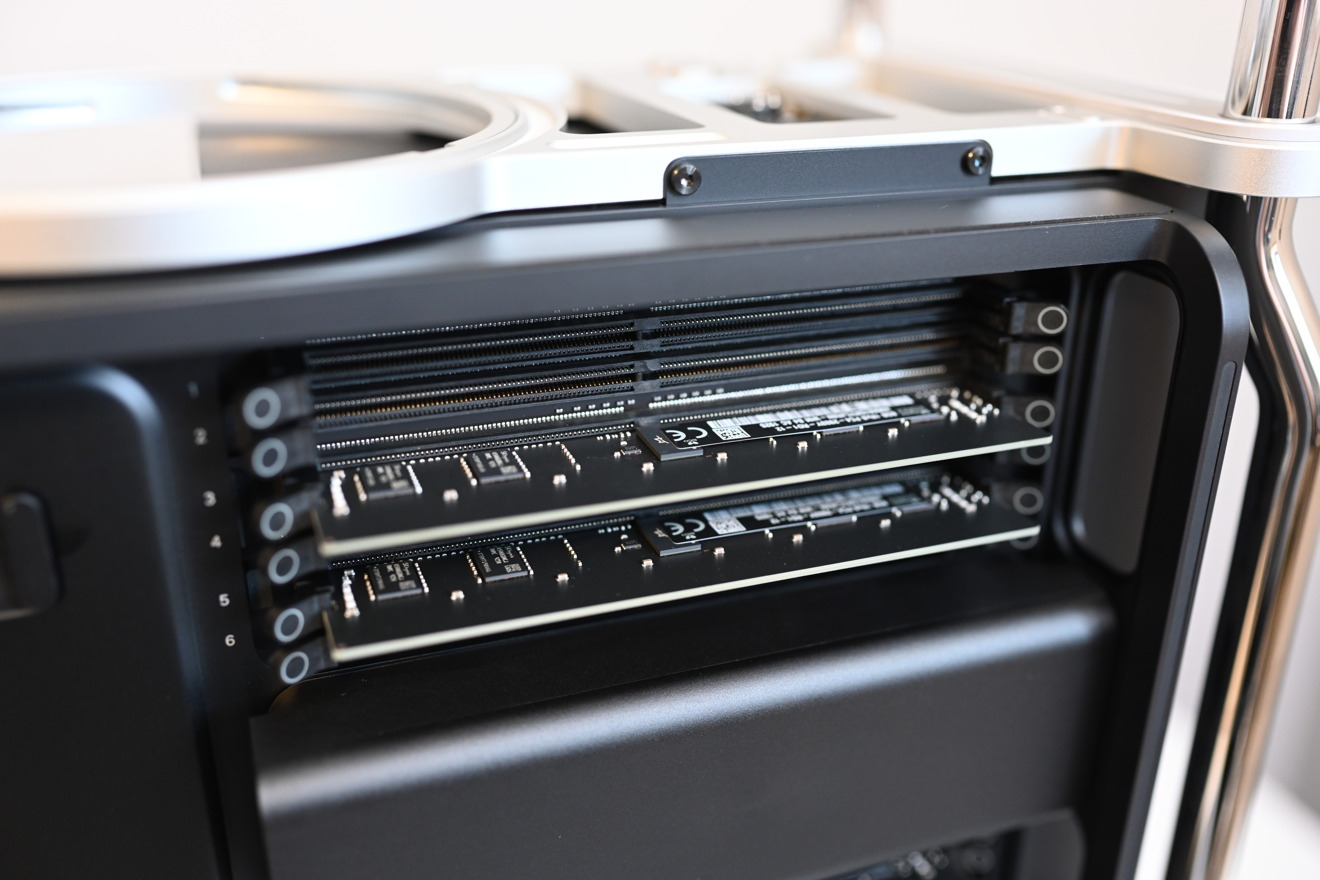
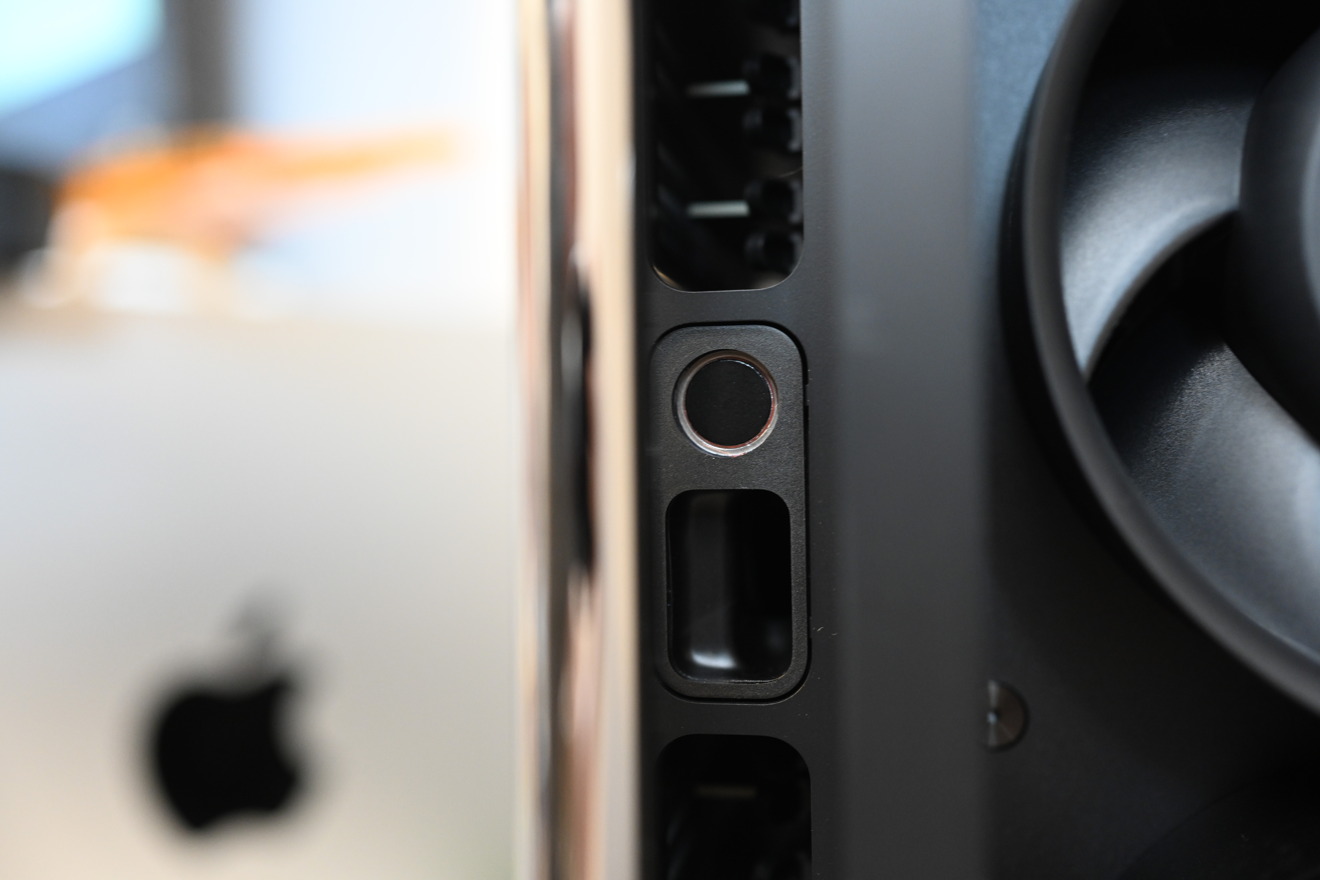
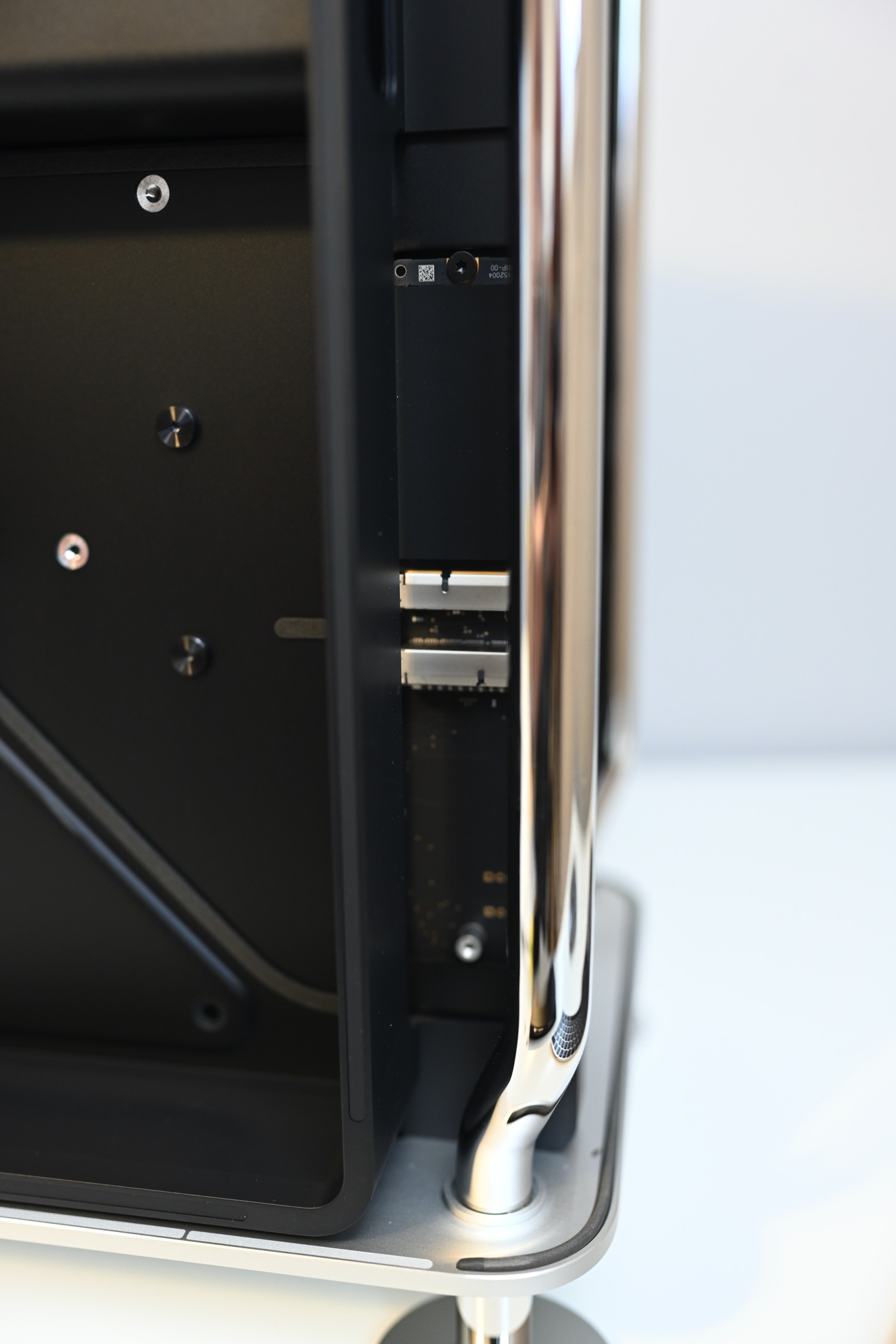
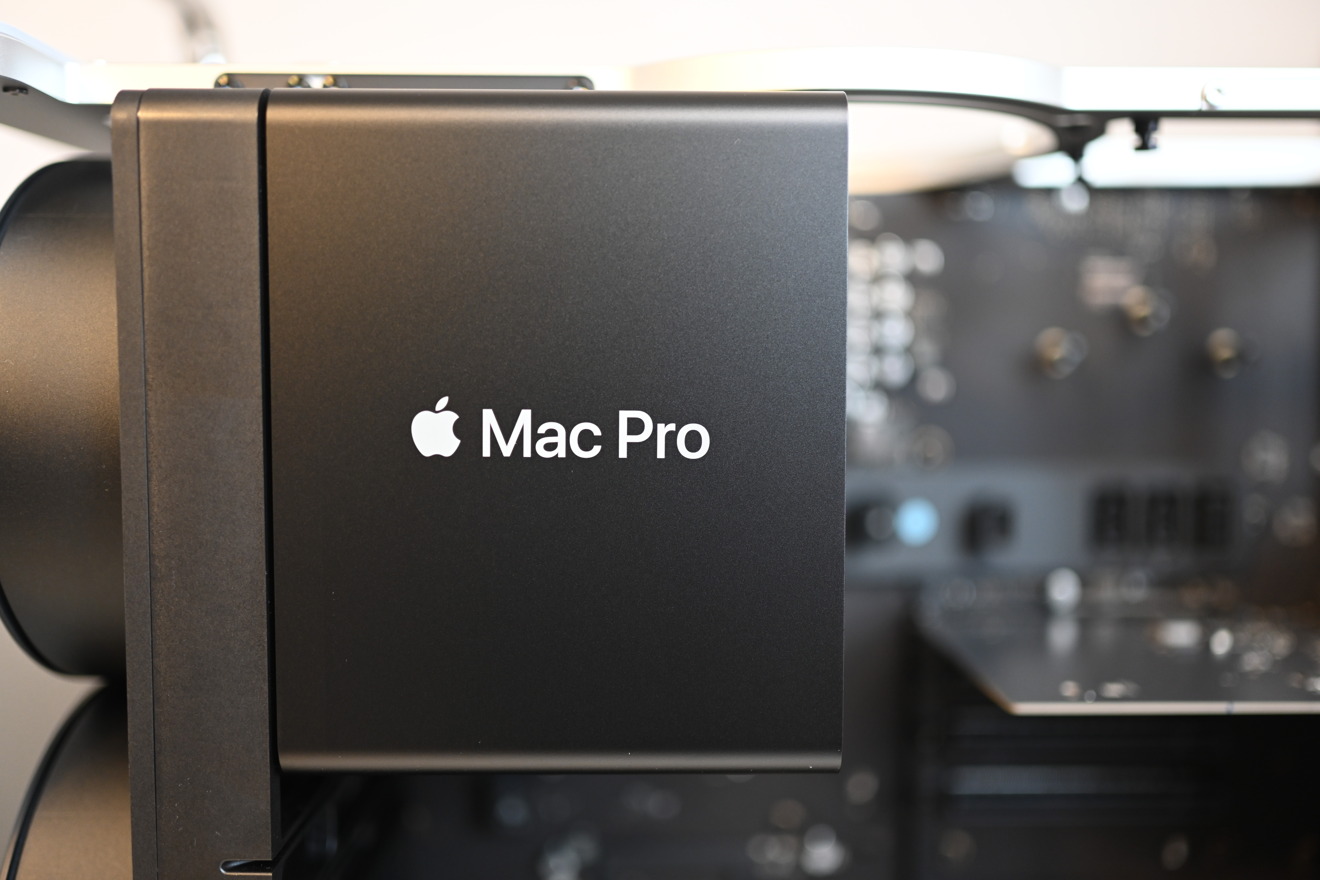
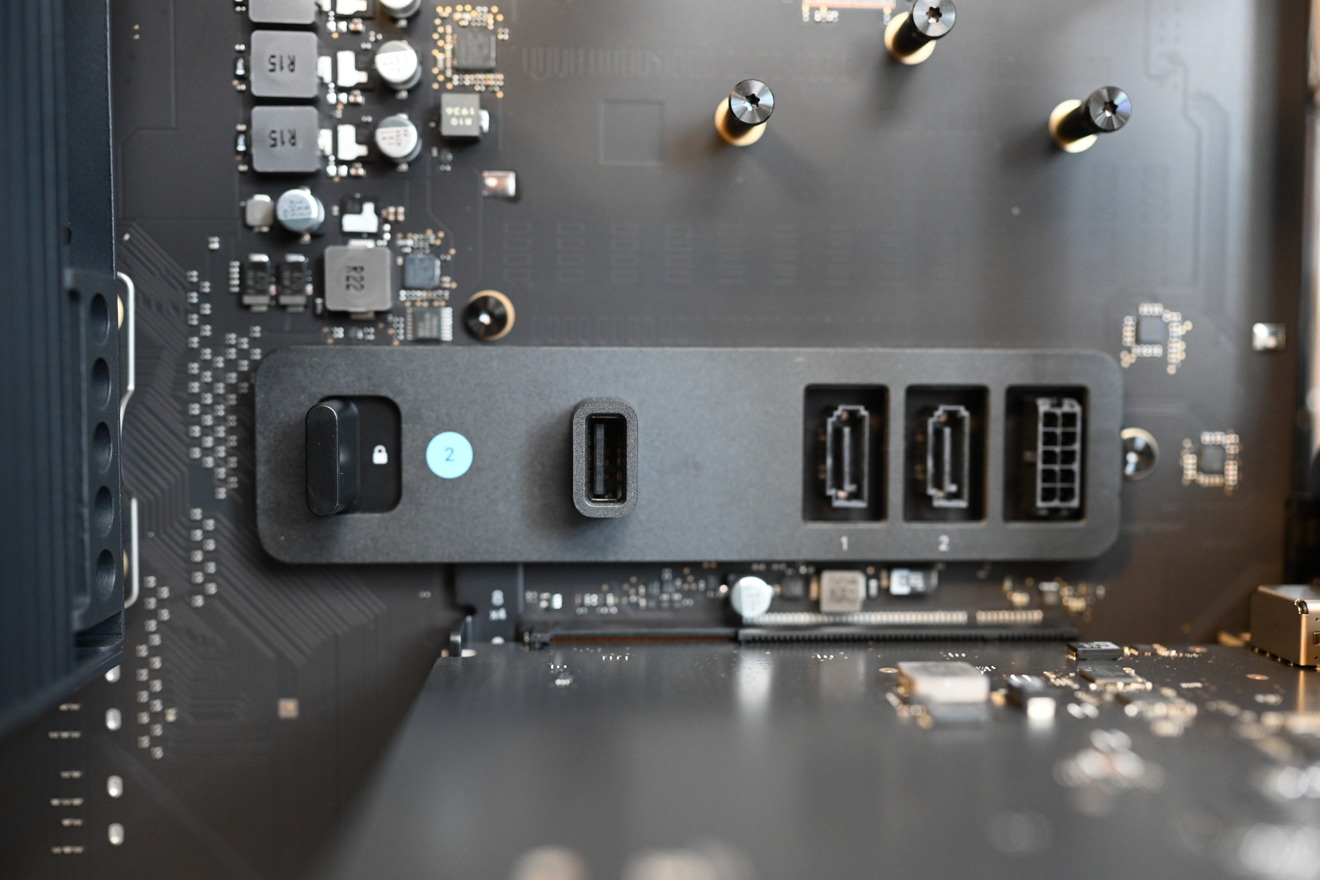
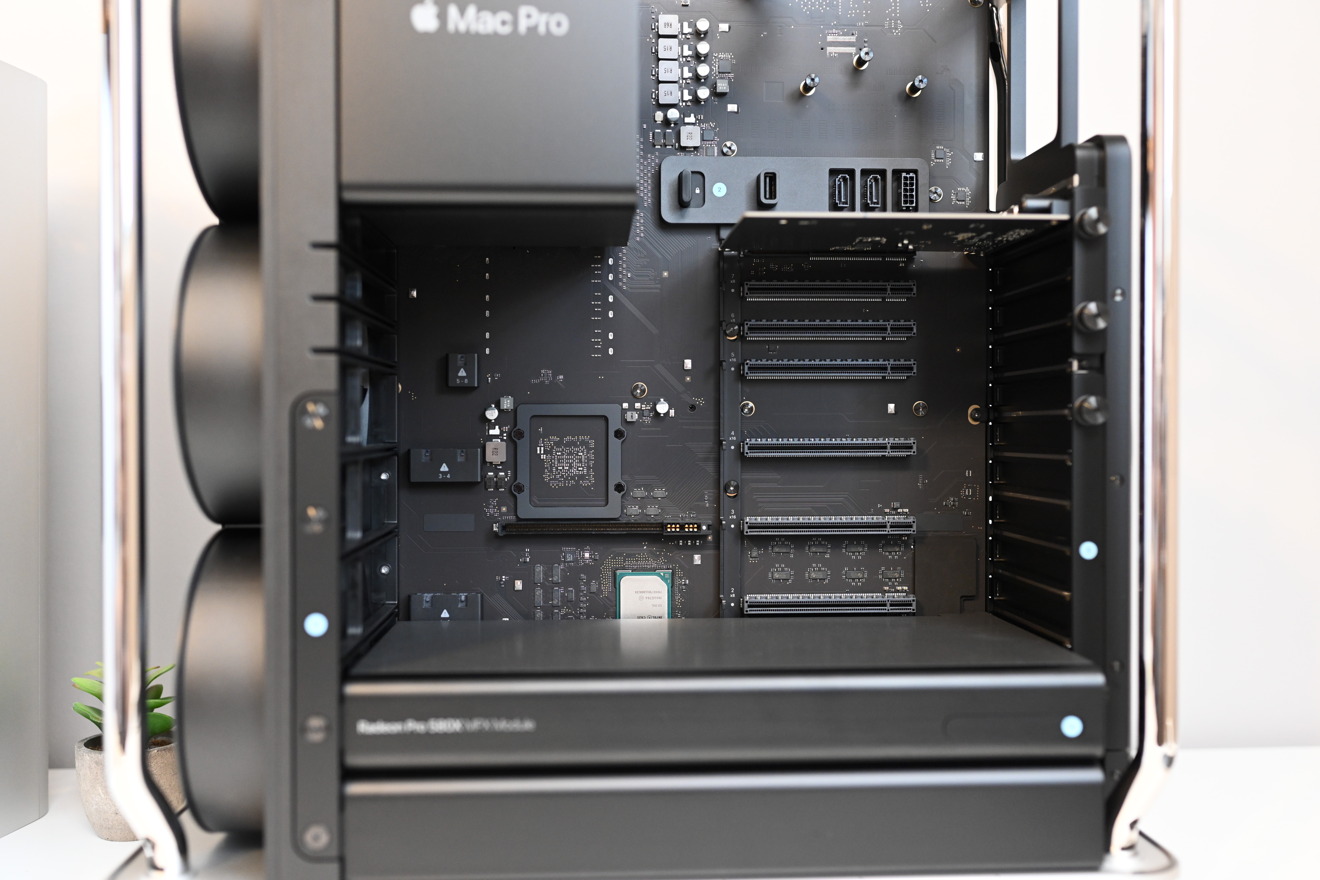
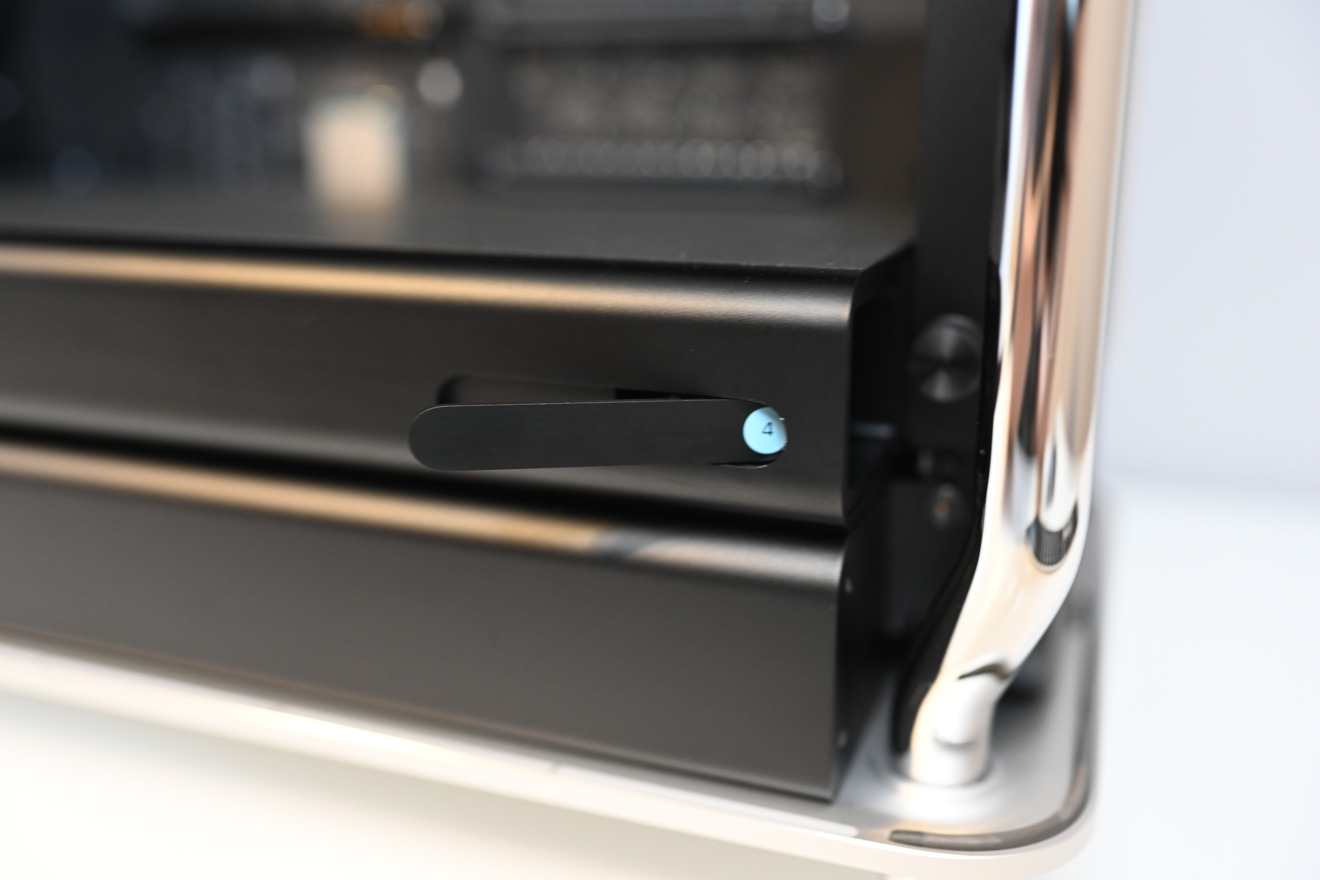
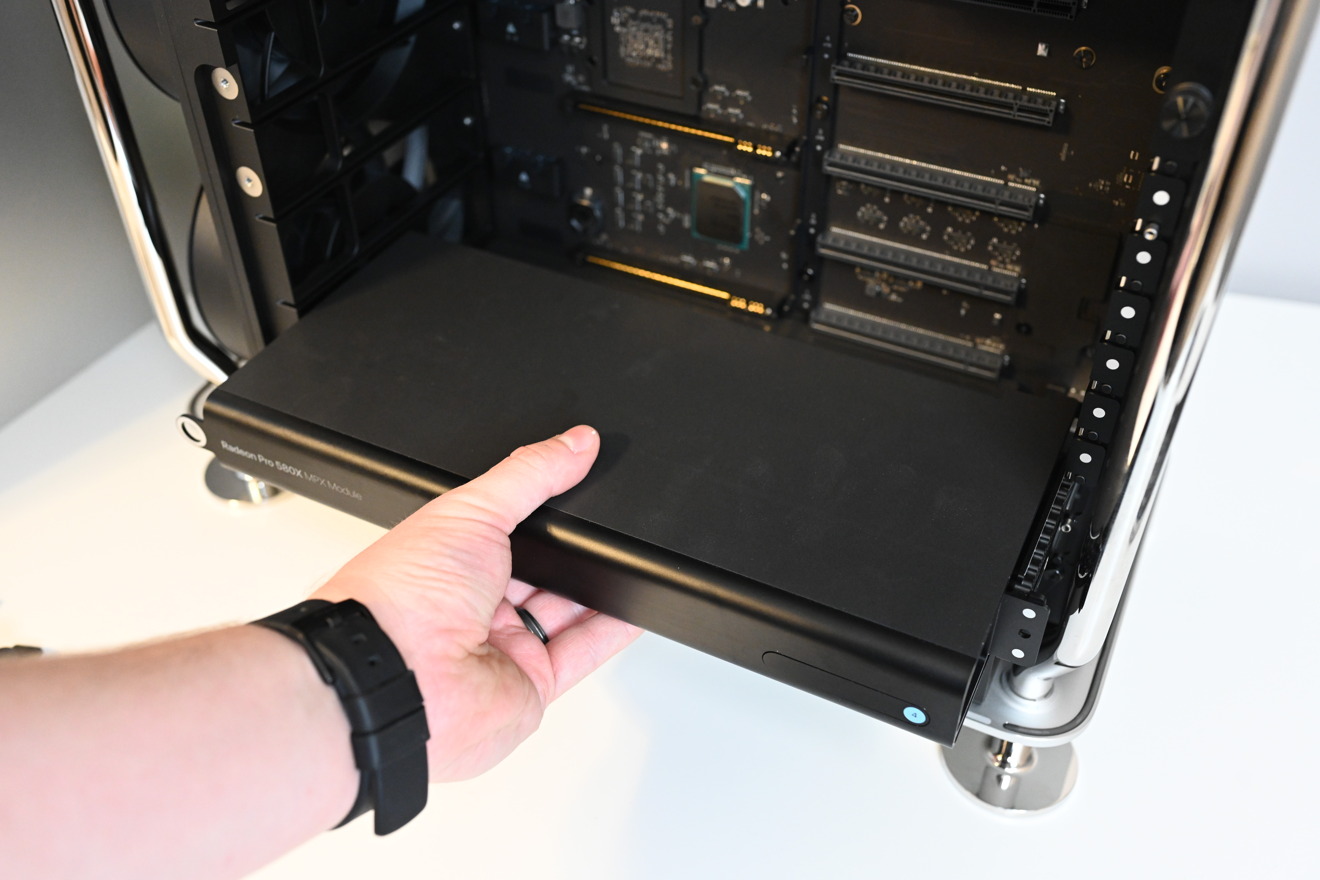
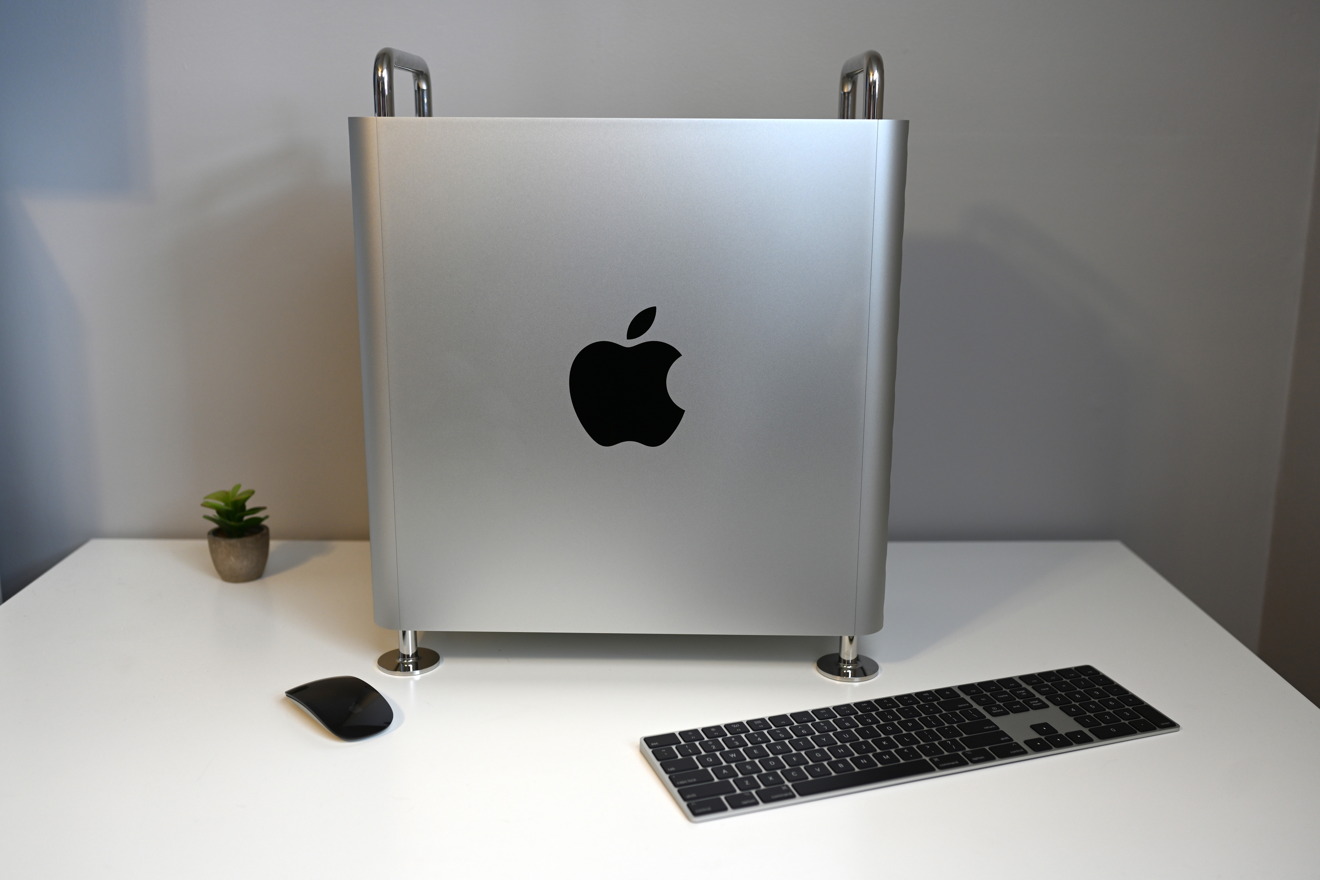











 Wesley Hilliard
Wesley Hilliard
 Andrew Orr
Andrew Orr



 Amber Neely
Amber Neely

 William Gallagher
William Gallagher







